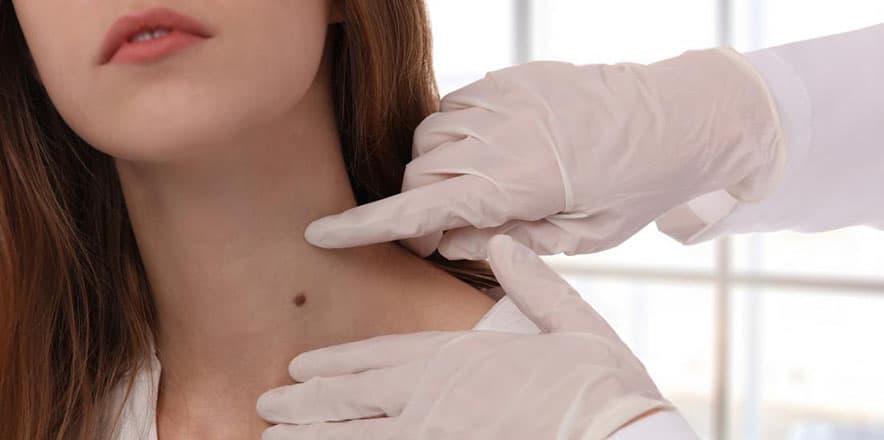Skin Cancer Signs and Diagnosis
Every day, more than 9,500 people in the U.S. are diagnosed with skin cancer. Unfortunately, skin cancer is growing exponentially, making it the most common type of cancer. Early detection is key, and the earlier the diagnosis, the better the chance of avoiding surgery, scars, or even death.
Skin cancer can be divided two ways, melanoma and non-melanoma. Two of the most common non-melanoma skin cancers are called Basal Cell Carcinoma and Squamous Cell Carcinoma. Melanoma is not common, but when detected, it is the deadliest form. Melanomas rapidly spread to form new cancers around the body.
Frequent examinations by your dermatologist, or daily skin checks can help discover early signs of skin cancer. Because skin cancer signs are often seen rather than felt, it is sometimes difficult to recognize. Here are a few tips on when to see a dermatologist:
- Mole or discoloration in the skin that is new or changing- for example, a mole that is significantly different from other moles.
- Any mole or lesion that is irritated, crusting, or bleeding that doesn’t heal within a few weeks. Usually found on the face, shoulders, chest, arms and legs.
- An elevated border that’s indented in the center and pink.
- A persistent open sore that bleeds and crusts.
- A wart-like growth that sometimes bleeds and crusts.
Checking Melanomas with the ABCDEs
A good starting point for checking melanomas is to use the ABCDEs. This is helpful when doing skin checks for skin cancer signs.
A – ASYMMETRY
When a mole is unportioned or parts of it look different.
B – BORDER
When a mole has rough edges, different color, or is jagged.
C – COLOR
When the color is different throughout.
D – DIAMETER
When the diameter is greater than 6mm (but cancers could be smaller).
E – EVOLVING
A mole or spot that has changed over time.
Visit www.skincancer.org to see photos and descriptions of melanoma and non-melanoma skin cancers signs to help you with your skin checks.
We also recommend that you protect your skin from the sun’s ultraviolet rays by following our clinician’s tips:
- Seek shade whenever possible. Especially avoid exposure between 10:00am-4:00pm.
- Wear a broad spectrum, water resistant sunscreen with SPF of 30+ and reapply every two hours.
- Cover sun exposed areas like eyes, scalp, face, and shoulders with sunglasses, clothing and hats.
- Avoid the use of tanning beds.
If you have any questions or concerns regarding skin cancer, Dr. Mekelburg and team would be happy to assist. Call us at (310) 659-9075.



